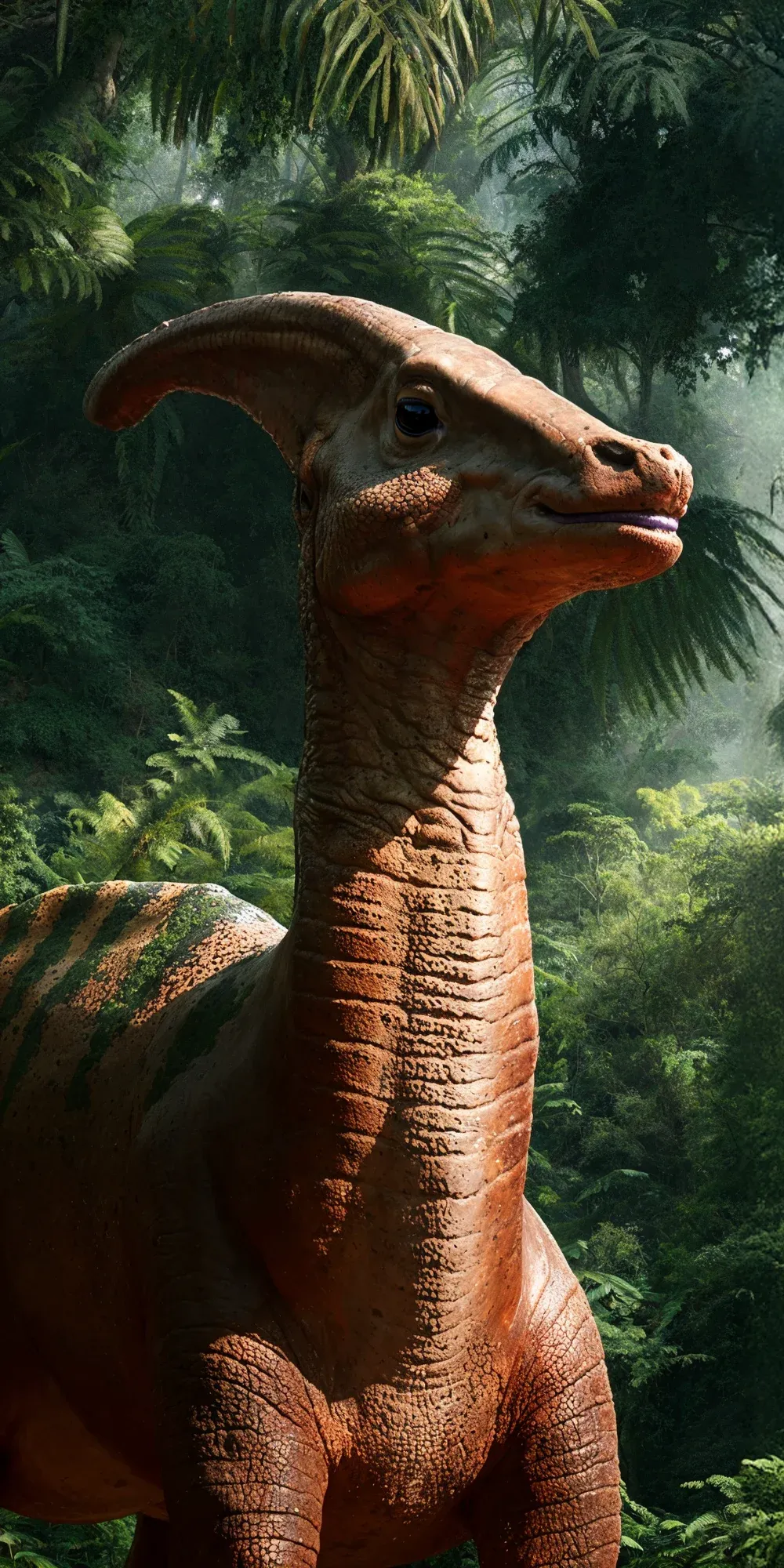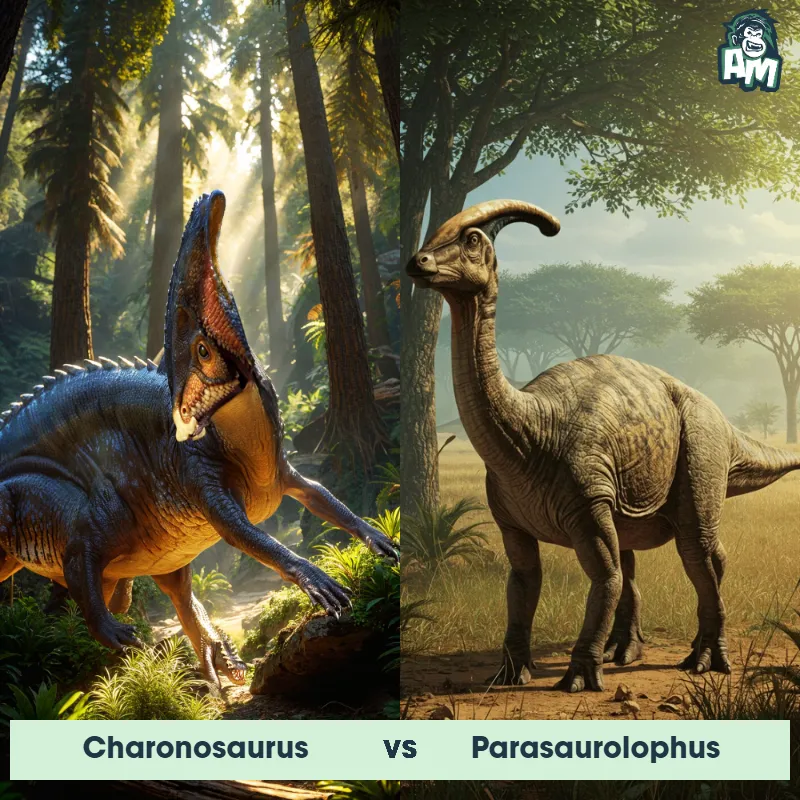The Parasaurolophus
The Parasaurolophus, also known as the "crested lizard," was a herbivorous dinosaur that roamed North America during the Late Cretaceous period. It was characterized by a long, hollow crest on its head, which could have been used for communication or regulating body temperature. This dinosaur walked on four legs, had a long tail, and had a beak-like mouth for eating plants.

| Parasaurolophus | |
|---|---|
| Size | Up to 30 feet long (9.1 meters) |
| Weight | Up to 4 tons (3,629 kilograms) |
| Speed | 25-28mph (40-45km/h) |
| Key Strength | Strong tail for defense |
| Biggest Weakness | Vulnerable neck due to crest |
| Scientific Name | Parasaurolophus |
| Family | Hadrosauridae |
| Habitat | Forests and coastal plains |
| Geography | North America |
| Diet | Herbivorous |
| Lifespan | 50 years - 70 years |

The Parasaurolophus
The Parasaurolophus, also known as the "crested lizard," was a herbivorous dinosaur that roamed North America during the Late Cretaceous period. It was characterized by a long, hollow crest on its head, which could have been used for communication or regulating body temperature. This dinosaur walked on four legs, had a long tail, and had a beak-like mouth for eating plants.
Fun Fact: Parasaurolophus had one of the longest crests among all known dinosaurs, measuring up to six feet in length.
| Parasaurolophus | |
|---|---|
| Size | Up to 30 feet long (9.1 meters) |
| Weight | Up to 4 tons (3,629 kilograms) |
| Speed | 25-28mph (40-45km/h) |
| Key Strength | Strong tail for defense |
| Biggest Weakness | Vulnerable neck due to crest |
| Scientific Name | Parasaurolophus |
| Family | Hadrosauridae |
| Habitat | Forests and coastal plains |
| Geography | North America |
| Diet | Herbivorous |
| Lifespan | 50 years - 70 years |
Parasaurolophus Matchups
We use AI to simulate matchups between the Parasaurolophus and other animals. Our simulation considers size, strength, and natural predatory behaviors to determine the most likely outcome.

Can't find the Matchup you want?
Create Your Own MatchupParasaurolophus: Diet, Predators, Aggression, and Defensive Behaviors
What did Parasaurolophus eat?
Parasaurolophus were herbivorous dinosaurs, meaning they primarily ate plants. They likely fed on a variety of vegetation including ferns, cycads, conifers, and other prehistoric plants found in their environment.
Did Parasaurolophus have any predators?
Parasaurolophus may have faced predators such as large carnivorous dinosaurs like Tyrannosaurus rex. However, their size, speed, and herding behavior likely provided some protection against potential predators.
Were Parasaurolophus aggressive?
Parasaurolophus are generally believed to have been peaceful and non-aggressive dinosaurs. They were more likely to rely on their herd behavior and size to deter potential threats rather than resorting to aggression.
Did Parasaurolophus fight?
Parasaurolophus are not known to have engaged in physical fights with each other. Instead, they likely used their size and elaborate crest structures for display purposes during mating or territorial disputes.
How did Parasaurolophus defend themselves?
Parasaurolophus may have relied on their speed and herding behavior to defend themselves against predators. Additionally, their large, hollow cranial crests have been theorized to produce loud vocalizations that could have been used to deter threats or communicate with other members of their herd.
What was Parasaurolophus' biggest weakness in a fight?
Parasaurolophus' biggest weakness in a fight may have been their relatively thin body structure and lack of physical weapons for defense. While their size and herd behavior provided some protection, they may have been vulnerable to attacks from large carnivorous dinosaurs that could overpower them.
Fun Fact: Recent studies suggest that the crest of Parasaurolophus may have produced low-frequency sounds, possibly used for vocalizations or to communicate over long distances.
Fun Fact: Parasaurolophus is thought to have lived in herds, as evidenced by the discovery of multiple fossils found in close proximity to each other.











